September 16, 1908 – Carriage Maker incorporates General Motors –
William Crapo “Billy” Durant, co-owner of America’s largest manufacturer of horse-drawn carriages, founded General Motors Holding Company in Flint, Michigan. The Durant-Dort Carriage Company, which had taken control of Buick Motor Company, would soon acquire Olds Motor Works of Detroit.
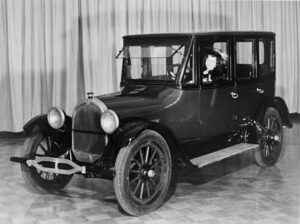
General Motors sold its 1,000,000th car in 1919, an Oldsmobile 37-B model. Photo courtesy Library of Congress.
Within two years, Durant’s General Motors purchased dozens of auto manufacturing companies, including Cadillac and Oakland Motor Car (Pontiac). Durant attempted to acquire Ford Motor Company, but his bankers denied a “buy-out loan” of $9.5 million.
Durant was ousted from GM for over-extending the company’s finances, but returned in 1918 after arranging a reverse merger with Chevrolet Motor Car Company, which he had founded with Louis and Arthur Chevrolet in 1911, a decade after the first U.S. auto show. In 1955, GM became the first American company to make more than $1 billion in a single year.
September 17, 2021 – Celebrating a Pennsylvania Oilfield and Museum
Bradford, Pennsylvania, celebrated the 150th anniversary of the discovery of “America’s first billion-dollar oilfield” and the 50th anniversary of the opening of the Penn-Brad Oil Museum. “We look forward to the future, but we celebrate the wealth of our history,” noted the Chamber of Commerce.

Pennsylvanians celebrated anniversaries of the nation’s first billion-dollar oilfield and the oil museum that opened 100 years later to preserve its history.
The Allegheny National Forest Visitors Bureau released a brief promotional video about the museum and Bradford, once the “high-grade oil metropolis of the world.” One decade after its 1871 discovery, the Bradford field alone produced more than 80 percent of all oil used in the United States — and 70 percent of the world’s production.
September 18, 1855 – First U.S. Oil Company reorganizes
In need of more capital, George Bissell and partner Jonathan Eveleth reorganized their New York-based Pennsylvania Rock Oil Company — America’s first oil exploration company — into the Seneca Oil Company of New Haven, Connecticut. They continued to seek investors for drilling a well to produce oil that could be refined into kerosene.
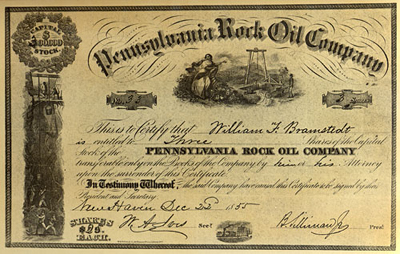
America’s first oil company, Pennsylvania Rock Oil Company, reorganized as Seneca Oil Company of New Haven Connecticut in 1858, one year before drilling the first U.S. commercial oil well.
The Pennsylvania Rock Oil Company had been established in 1854 to drill a well near Titusville (see George Bissell’s Oil Seeps). The re-incorporated business entered New York City’s capital markets, which had shown little interest in drilling for oil, seen as too speculative.
Seneca Oil hired former railroad conductor Edwin L. Drake, who overcame financial and technical obstacles to complete the first U.S. oil well in August 1859.
September 18, 1948 – Oil discovered in Utah
J.L. “Mike” Dougan, president of the Equity Oil Company, completed Utah’s first significant oil well. Dougan’s small company outcompeted larger and better-financed exploration companies, including Standard Oil of California (Socal), Pure Oil, Continental, and Union Oil. His Uinta Basin oilfield discovery launched a deep-drilling boom in Utah.
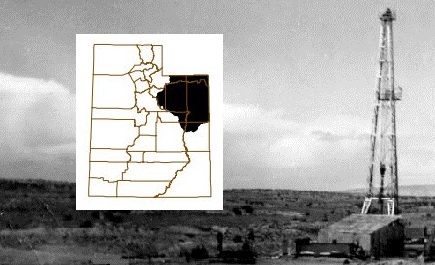
Begun in 1948 in the giant Uinta Basin, Utah’s petroleum industry continues today thanks to reserves of coalbed methane gas.
Unlike earlier attempts, Dougan drilled beyond the typical depth of up to 2,000 feet. His Ashley Valley No. 1 well, 10 miles southeast of Vernal, produced 300 barrels of oil a day from about 4,000 feet.
Uinta Basin production soon averaged almost one million barrels of oil a year from 30 wells. As drilling technologies advanced, companies began drilling to 8,000 feet and deeper.
Learn more in First Utah Oil Wells.
September 21, 1901 – First Louisiana Oil Well
Nine months after the headline-making January 1901 “Lucas Gusher” in Texas, another giant oilfield was revealed 90 miles east in Louisiana. W. Scott Heywood — already successful thanks to wells drilled at Spindletop Hill — completed a wildcat well that produced 7,000 barrels of oil a day on the farm of Jules Clement.
Drilled six miles northeast of Jennings, the Clement No. 1 found oil at a depth of 1,700 feet. “The well flowed sand and oil for seven hours and covered Clement’s rice field with a lake of oil and sand, ruining several acres of rice,” noted the Jennings Daily News.
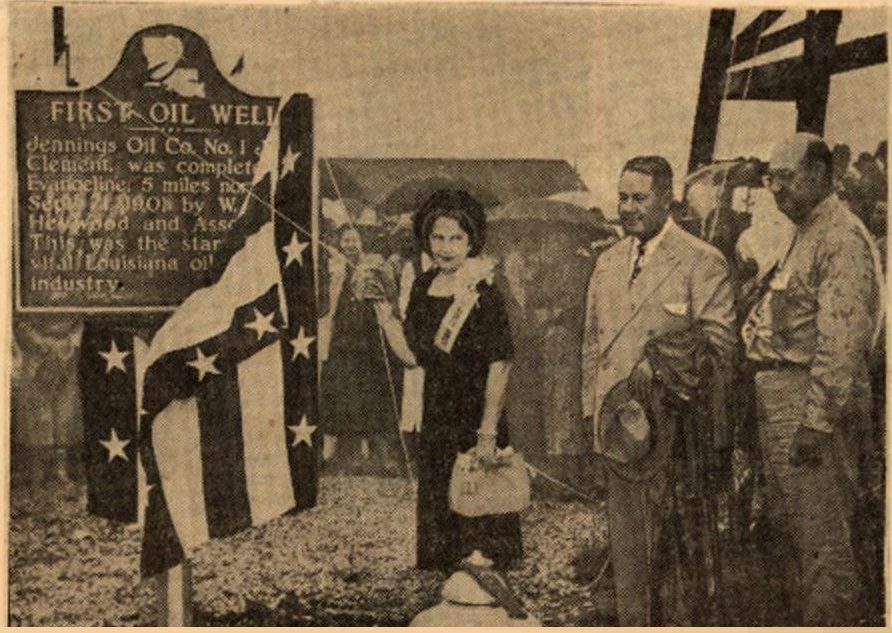
Mrs. Scott Heywood unveiled a marker as part of the Louisiana Golden Oil Jubilee in 1951. Times-Picayune (New Orleans) image courtesy Calcasieu Parish Public Library.
The discovery led to the state’s first commercial oil production by opening the prolific Jennings field, which Haywood further developed by building pipelines and storage tanks. As the oilfield reached peak production of more than nine million barrels of oil in 1906, more discoveries arrived in northern Louisiana.
Learn more in First Louisiana Oil Wells.
September 22, 1955 – End of Signal Oil “The Whistler” Radio Show
Sponsored since 1942 by the largest independent oil company on the West Coast, the last episode of the radio drama “The Whistler” aired on CBS Radio. Signal Oil Company was established in 1921 by Samuel Mosher as the Signal Gasoline Company during California’s Signal Hill oil boom.
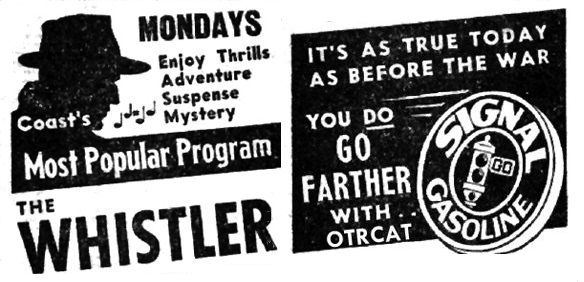
Signal Oil Company sponsored a CBS Radio mystery program beginning in 1942.
The company’s 1931 partnership with Standard Oil of California (Socal) led to sponsorship of many radio programs, according to Media Heritage. All 692 weekly episodes of Signal Oil’s popular radio mystery began with echoing footsteps and an eerie whistle, followed by “That Whistle is your signal for the Signal Oil program.”
_______________________
Recommended Reading: A History of General Motors (1992); Myth, Legend, Reality – Edwin Laurentine Drake and the Early Oil Industry (2009); Utah Oil Shale: Science, Technology, and Policy Perspectives
(2016); From the Ground Up: A History of Mining in Utah (2006); Louisiana’s Oil Heritage, Images of America
(2012); Early Louisiana and Arkansas Oil: A Photographic History, 1901-1946
(1982); Signal Hill, California, Images of America
(2006); Black Gold in California: The Story of California Petroleum Industry
(2016).
_______________________
The American Oil & Gas Historical Society (AOGHS) preserves U.S. petroleum history. Please become an AOGHS annual supporter and help maintain this website and expand historical research. For more information, contact bawells@aoghs.org. Copyright © 2024 Bruce A. Wells. All rights reserved.



